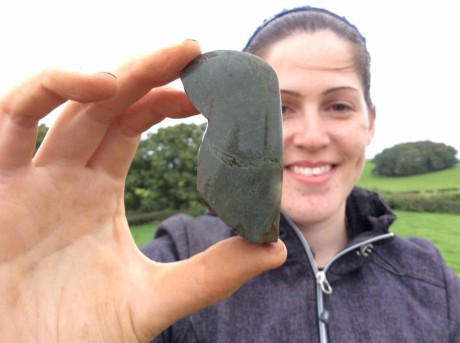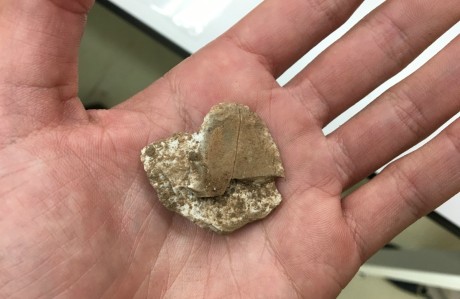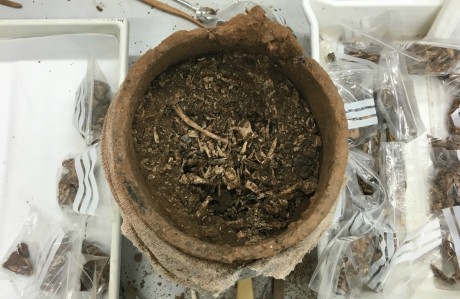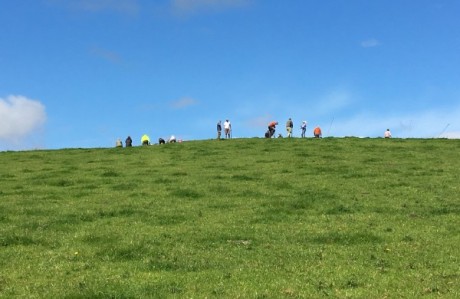
Four thousand years ago, people living in what is now north Lancashire carried tonnes of rock up a hill. Piling them high, they created a monument so large it would have been visible for miles around. But, one week into our excavation, we’ve found evidence to suggest it was once even more visible than it is today…
There are 60,000 Bronze Age barrows in the UK, and the one we’re excavating is a very substantial one. So far, our cross-shaped trench has revealed a mound of stones at least 20-25m in diameter. It’s got views over Morecambe Bay, and towards the Lake District. It’s also in its own hidden valley so it’s a very striking location. In short, it’s in prime Bronze Age monument real estate.
One week into our excavation, we’ve removed the turf, the subsoil, and have broken through the first, mixed layer into undisturbed Bronze Age burial. We’re already finding some really interesting stuff, including flint tools, and plenty of stone not native to the area. There are large chunks of pitch black jet, and nuggets of bright red ochre. Both have a history of being found in Bronze Age ceremonial places.
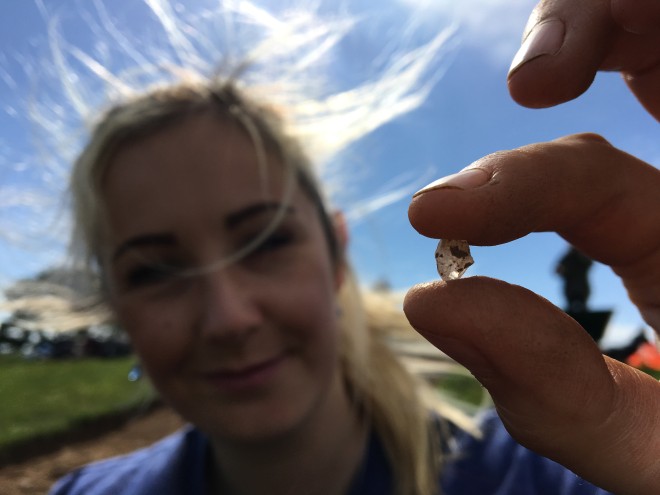 But what’s really interesting is that we’ve also been finding lots of white stone. From small pebbles of quartzite, to gleaming shards of rock crystal, neither occur naturally in the area. Perhaps most significantly, at the outer edges of the barrow, we’re beginning to uncover some really big pieces of white limestone.
But what’s really interesting is that we’ve also been finding lots of white stone. From small pebbles of quartzite, to gleaming shards of rock crystal, neither occur naturally in the area. Perhaps most significantly, at the outer edges of the barrow, we’re beginning to uncover some really big pieces of white limestone.
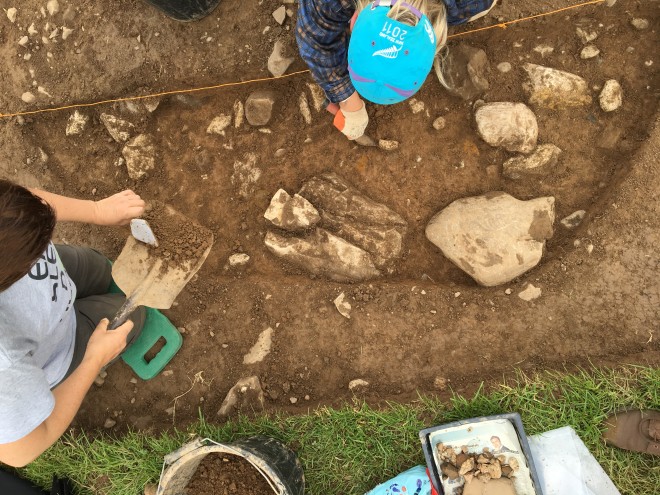 If you’re interested in the past, you’re bound to know that large monuments – like the pyramids – were originally white. So too were many Ancient Greek temples. But what about monuments in the UK?
If you’re interested in the past, you’re bound to know that large monuments – like the pyramids – were originally white. So too were many Ancient Greek temples. But what about monuments in the UK?
Recently, British archaeologists have been getting more and more interested in the colour of ancient monuments. When you think about it, it’s something that makes sense. Down south, big monuments like Stonehenge and Avebury, were cut into chalk. When those huge banks and ditches were originally dug, they too would have been white. It wasn’t just about those huge, grey standing stones; there would also have been a gleaming white enclosure.
Likewise, Thornborough Henges (a trio of aligned circular bank and ditch monuments just across the Pennines from where we’re digging) were covered in gypsum.
Closer to where we’re digging, there’s also the Bronze Age funerary cairn near Borwick. Archaeologists who excavated a few decades ago found that the earliest structure was a sub-rectangular enclosure of limestone boulders dated to c. 1740–1640 BC.
It seems that all around the country, white was being used to highlight Neolithic and Bronze Age monuments. With so many big slabs of white limestone showing up in our trenches, it really is starting to look like the people who built were trying to create a striking, white monument, not just a dull grey one.
So, were some of Britain’s Bronze Age monuments originally white? From where we’re standing, it really is starting to look that way.
